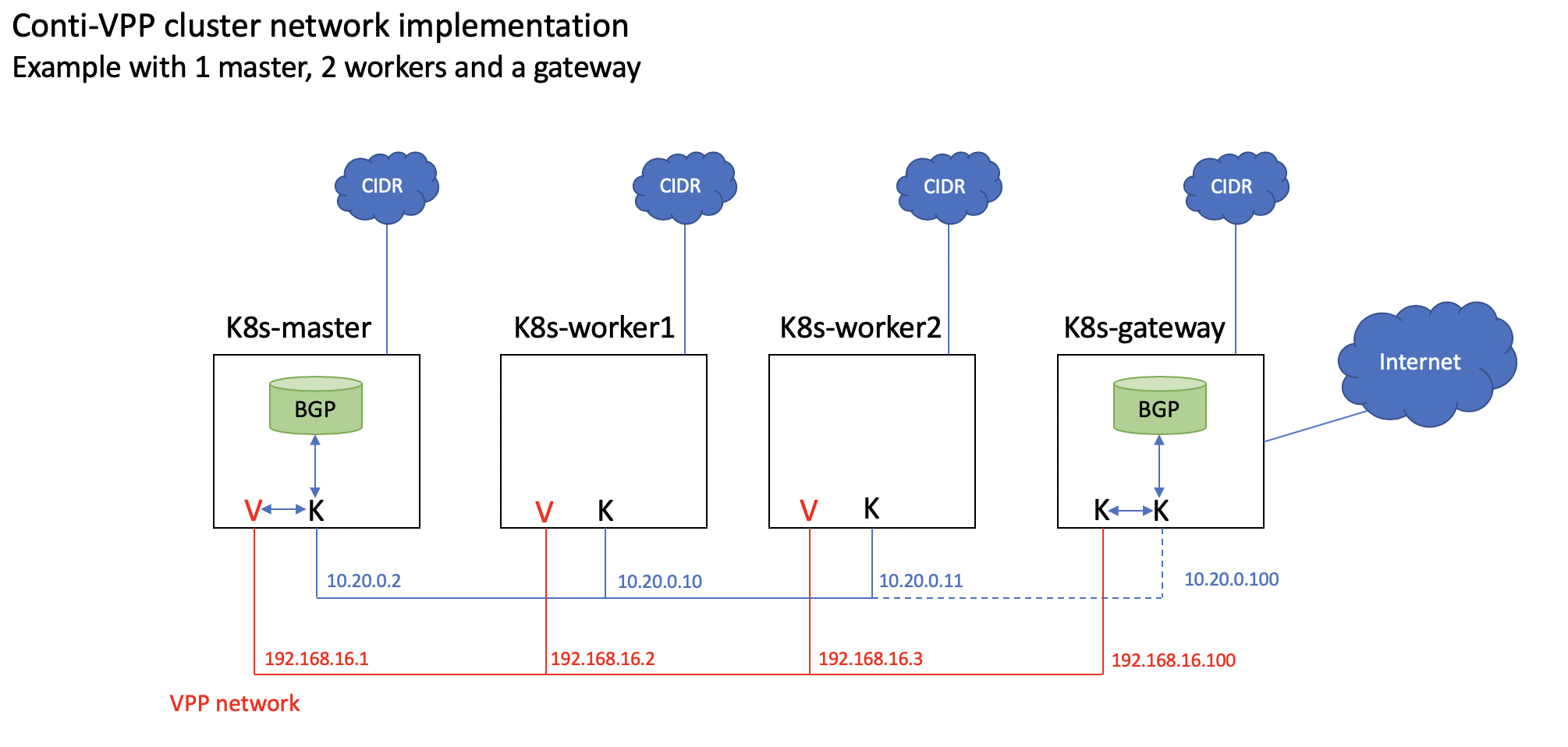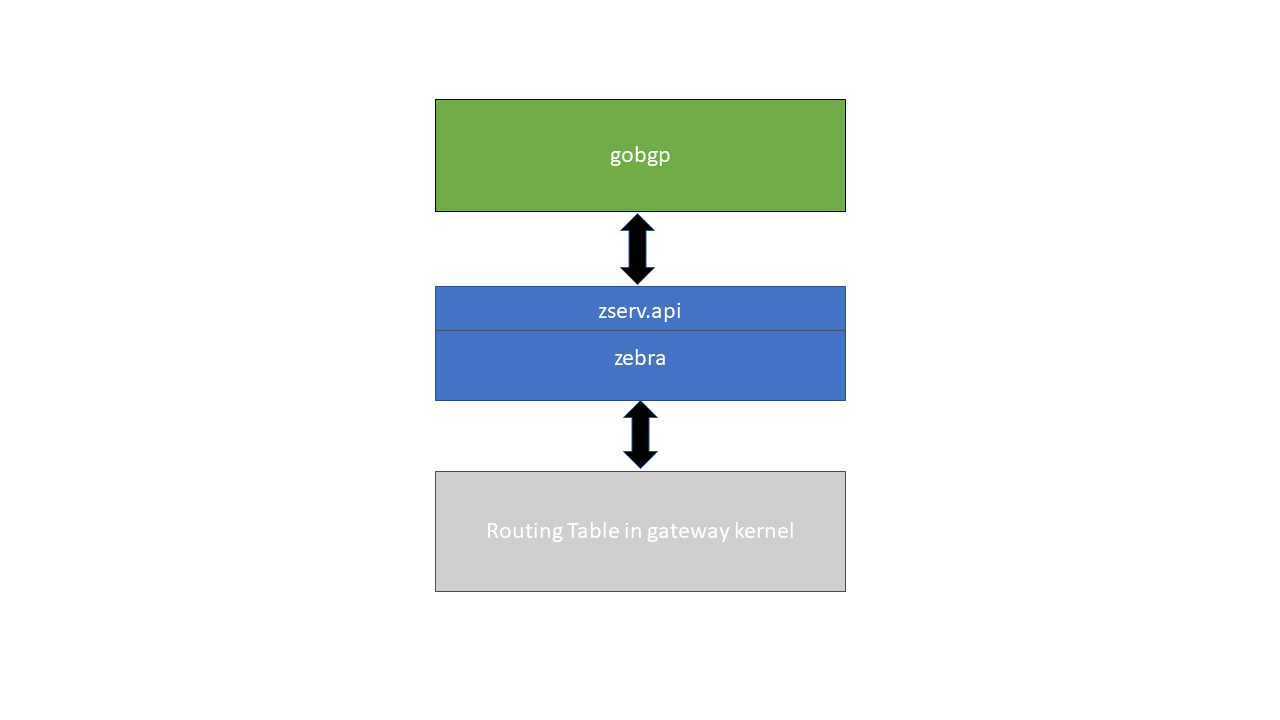A BGP Speaker implementation for Contiv-VPP
Please follow instructions in https://github.com/osrg/gobgp to get your off-the-shelf gobgp set up. Make sure to add the master node as a neighbor to the gateway.
First, edit the gateway's off-the-shelf bbgpd.conf file to enable zebra feature:
[zebra]
[zebra.config]
enabled = true
url = "unix:/var/run/quagga/zserv.api"
redistribute-route-type-list = ["connect"]
version = 2
Next, to set install quagga on the gateway do the following:
$ sudo su //ensure that sudo is being used if you decide to not use this command to start
# apt-get update
# apt-get install quagga quagga-doc
Then, configure Quagga daemons by editing the file /etc/quagga/daemons to start the zebra daemon.
# nano /etc/quagga/daemons
Configure the deamons file as such:
zebra=yes
bgpd=no
ospfd=no
ospf6d=no
ripd=no
ripngd=no
isisd=no
babeld=no
Next, create config files for the zebra daemon. You can you the sample installed with quagga-doc:
# cp /usr/share/doc/quagga/examples/zebra.conf.sample /etc/quagga/zebra.conf
# chown quagga.quaggavty /etc/quagga/*.conf
# chmod 640 /etc/quagga/*.conf
Start Quagga:
# /etc/init.d/quagga start
Now you will need to run the gateway by using the command:
$ sudo -E ./gobgpd -f ./gobgpd.conf
You will also need to run the executable GoBGP that you create in GoLand to run bgp on the master:
$ go run main.go
Finally, check if your network is set up by viewing the routing table in the gateway using:
$ netstat -rn
An example of the Routing Table will appear as follows. The gateway node should learn the different CIDR subnets with the appropriate IP-VPP as the next hop.
You will also be able to ping the connection.
#Referenced https://www.brianlinkletter.com/how-to-build-a-network-of-linux-routers-using-quagga/


